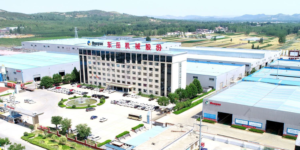— Challenges and risks
The roadmap provides a viable pathway to net zero for AAC manufacturers but does face three principal risks:
1. Success of the cement and lime roadmaps
The roadmap relies on the success of the cement and lime industry roadmaps to decarbonise by 2050. These roadmaps depend on widespread adoption of CCU and CCUS technology which has an uncertain economic model, and on innovation to develop alternative binders which have not yet been proven as viable raw materials for AAC production.
2. Access to renewable energy sources
To remove factory emissions in the production of AAC, EAACA members will require access to renewable electricity
and to hydrogen as fuel sources. Currently, EU and UK hydrogen policy and infrastructure plans are at an early stage and it is unlikely that hydrogen infrastructure will be rolled out at a uniform pace across member countries.
3. Investment costs
Implementing the roadmap will require long-term action and investment by AAC manufacturers. The main cost for EAACA members is the investment required to upgrade the boilers that provide steam to the autoclaves to run on lower carbon
fuel sources. The speed at which this investment occurs will vary between members.
Do you want to become a member of EAACA? Contact us!
News

We welcome a new Member – Dongyue Machinery Group
We are pleased to announce that Dongyue Machinery Co, Ltd. has recently joined the association and supports us in our work. Dongyue Machinery Co., Ltd.

Election Piotr Dauksza
At a recent meeting of the Executive Committee of the European Autoclaved Aerated Concrete Association (EAACA), the Committee unanimously elected Mr Piotr Dauksza as the

EAACA statement on the current RAAC topic in the UK
Following various media reports on the subject of RAAC in the UK, we as a European association would like to comment on this. Please find
